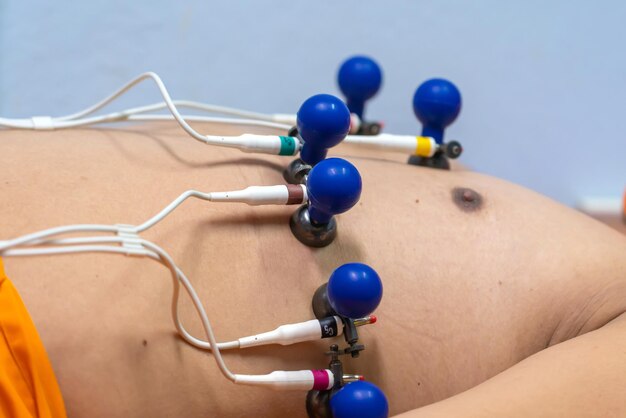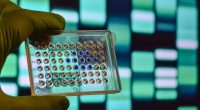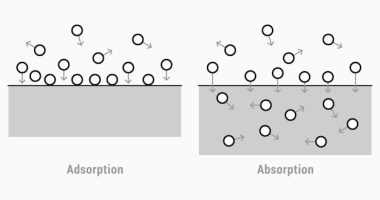Recent research has explored the potential linkage between electrostatic energy lipoatrophia sem and subcutaneous tissue damage in an innovative study titled “An Experimental Murine Model to Study Lipoatrophia Semicircularis.” Conducted by a team of esteemed researchers including María Angustias Palomar-Gallego, Julio Ramiro-Bargueño, and their colleagues, the study delves into the benign yet perplexing condition known as Lipoatrophia Semicircularis (LS). This condition, characterized by localized loss of subcutaneous fat, predominantly impacts the skin and its underlying structures, presenting both aesthetic concerns and scientific curiosity due to its unclear origins.
In pursuit of clarity, the researchers proposed and investigated the role of electrostatic charges as a contributing factor to LS. Utilizing a carefully designed experimental murine model, which involved obese mice under varying conditions of electrostatic exposure and grounding methods, the study sought to unravel the cause-effect relationship between electrostatic energy and the development of LS. By adjusting the electrostatic interactions—whether through direct skin contact, clothing, or no grounding—the research aimed to mimic human exposure scenarios and observe the resultant histological changes in the skin tissue.
The findings revealed significant insights into how electrostatic energy can influence cellular structures and lipid peroxidation processes, offering a pioneering perspective on the molecular mechanisms Driving LS. This groundbreaking work not only advances our understanding of LS but also sets a foundational platform for future investigations into electrostatic effects on human health.
Lipoatrophia Semicircularis (LS) is a peculiar dermatological condition marked by the localized atrophy of subcutaneous fat layers, manifesting as semicircular depressions primarily on the thighs and lower limbs. Its sporadic epidemiology and elusive etiology have long baffled healthcare professionals and researchers alike. Over the years, several theories on its causation have been considered—from repeated minor trauma to ergonomic factors in office environments—but none have conclusively determined its origins. In recent developments, ‘electrostatic energy lipoatrophia sem’ emerges as a compelling narrative, a term that encapsulates the hypothesis that electrostatic fields could be a significant driver of LS.
This path of inquiry is not entirely devoid of precedent. Previous observations have hinted at an association between static electricity and various skin conditions, suggesting that a disruption in local electrostatic environments could indeed affect dermal health. Thus, within this framework, the current research spearheaded by María Angustias Palomar-Gallego, Julio Ramiro-Bargueño, and their team becomes a crucial endeavor to empirically test this relationship using an innovative approach.
Their study, conducted on a cohort of lab-bred mice subject to different electrostatic conditions, acts as an essential primary venture in correlating electrostatic exposure to subcutaneous tissue damage. By replicating workplace scenarios where humans might encounter considerable static charges—such as synthetic fabrics, computer equipment, and poorly grounded environments—the research meticulously simulates the potential triggering conditions for LS. Furthermore, grounding techniques were alternated to evaluate their potential in mitigating any observed effects, providing a holistic view of the scenario.
Critical to understanding the implications of this study is the concept of lipid peroxidation—a process where oxidation leads to the degradation of lipids within cell membranes, potentially initiated or exacerbated by electrostatic interactions. Such molecular degradation could plausibly underlie the localized fat loss seen in LS, marking a significant leap in our understanding of the condition.
The immediate impact of this research is multifaceted. Not only does it offer a new perspective by substantiating the connection between ‘electrostatic energy lipoatrophia sem’ and subcutaneous tissue damage, but it also prompts a reevaluation of workplace safety norms and personal preventive measures in environments prone to high electrostatic charges. Moving forward, this pioneering study sets the stage for more extensive research involving human participants, which could validate these findings and potentially lead to targeted interventions.
As the scientific community continues to delve into the mechanistic intricacies of LS, this study reinforces the importance of considering environmental and seemingly innocuous factors in the pathogenesis of dermatological conditions. By broadening our lens to encompass electrostatic energy’s effects on human health, we inch closer to unraveling the mysteries of Lipoatrophia Semicircularis, paving the way for innovative preventative strategies and therapeutic approaches.
In their innovative approach to exploring the link between ‘electrostatic energy lipoatrophia sem’ and the development of Lipoatrophia Semicircularis (LS), María Angustias Palomar-Gallego, Julio Ramiro-Bargueño, and their research team employed a novel experimental murine model. This model aimed to understand how various electrostatic conditions might affect subcutaneous tissue integrity, specifically looking into the potential impact of electrostatic energy on subcutaneous fat degradation.
### Methodology:
The researchers selected a cohort of genetically identical obese mice to minimize variability in genetic factors that could influence the study’s outcome. These mice were divided into three groups, each subjected to different electrostatic environments, designed to mimic the range of human exposure in typical office settings:
1. **High Electrostatic Exposure (HEE):** Mice in this group were housed in environments with synthetically enhanced electrostatic fields. Materials such as polyester were used to emulate the high static electricity conditions found with certain office furnishings and clothing.
2. **Controlled Electrostatic Exposure (CEE):** This group was kept in a neutral environment where typical ambient electrostatic conditions were maintained, simulating a standard office environment without any specific enhancements or reductions in electrostatic levels.
3. **Grounded Exposure (GE):** In this setup, electrostatic discharge mechanisms were employed. The mice were kept in contact with anti-static materials and grounding devices to simulate an environment that actively mitigates electrostatic build-up.
Each group was observed over a period of six months, with regular monitoring and assessments conducted. The assessment involved detailed histological examinations of skin and subcutaneous tissue samples. These samples were tested for signs of lipid peroxidation, cellular disruptions, and fibrotic changes, factors believed to be indicative of the initial stages of LS.
### Analysis Techniques:
– **Histological Analysis:** Skin and subcutaneous tissues were stained and examined under a microscope to identify morphological changes and signs of fat tissue atrophy or remodeling.
– **Lipid Peroxidation Assays:** Biochemical tests were carried out to detect malondialdehyde (MDA), a marker of lipid peroxidation, in tissue samples.
– **Electrostatic Measurement:** Throughout the experiment, the electrostatic voltage of the environments was measured using specialized electrostatic voltmeters to ensure consistent environmental conditions across the groups.
### Key Findings:
The preliminary findings suggested a significant correlation between high electrostatic environments and enhanced lipid peroxidation levels, leading to localized fat loss in the HEE group. Meanwhile, the GE group showed significantly lower levels of fat degradation, suggesting a protective effect of grounding against ‘electrostatic energy lipoatrophia sem.’
### Conclusion:
By isolating the variable of electrostatic exposure in their murine model, the researchers successfully demonstrated a probable cause-effect relationship between elevated electrostatic conditions and subcutaneous tissue damage. This methodology not only substantiates the electrostatic hypothesis behind LS but also introduces potential preventive measures through grounding and electrostatic management.
This comprehensive exploratory research design lays the groundwork for future studies and interventions, possibly extending research into human trials to further validate the role of electrostatic energy in the pathogenesis of Lipoatrophia Semicircularis.
The groundbreaking research led by María Angustias Palomar-Gallego and Julio Ramiro-Bargueño, aimed to dissect the potential causes behind Lipoatrophia Semicircularis (LS), has produced compelling results indicating a strong link between ‘electrostatic energy lipoatrophia sem’ and subcutaneous tissue damage. Their dedicated investigation using an experimental murine model sheds light on how electrostatic environments could precipitate changes in subcutaneous tissue integrity, leading to conditions resembling LS.
### Key Findings:
1. **Elevated Lipid Peroxidation in High Electrostatic Exposure (HEE)**:
The mice subjected to high electrostatic conditions demonstrated a notable increase in markers of lipid peroxidation, specifically malondialdehyde (MDA). This biochemical evidence strongly supports the hypothesis that electrostatic energy facilitates oxidative stress, contributing to the degradation of lipid structures within the subcutaneous fat. The HEE group showed the most significant alterations, matching the characteristic fat loss seen in LS patients.
2. **Protective Effect of Grounding**:
Contrastingly, the Grounded Exposure (GE) group, where grounding and anti-static measures were implemented, exhibited considerably reduced signs of lipid peroxidation and subcutaneous tissue damage. This finding illustrates the potential of electrostatic discharge techniques in mitigating the harmful effects of static electricity on biological tissues. Indeed, grounding appears to act as a protective barrier against the deleterious effects of electrostatic energy lipoatrophia sem, thereby preserving tissue integrity.
3. **Control Group Comparisons**:
The Controlled Electrostatic Exposure (CEE) group, which lived in ‘normal’ electrostatic conditions, provided a baseline for comparison. While there were minor fluctuations in tissue integrity observed in this group, the extent of lipid peroxidation and subcutaneous damage was less pronounced than in the HEE group but slightly more than in the GE group. This graduated response across the three groups underscores the significant role of the electrostatic environment in influencing subcutaneous tissue health.
### Implications of the Findings:
The research essentially establishes a probable cause-effect relationship between exposure to high electrostatic fields and the onset of changes typical of Lipoatrophia Semicircularis. The experiment’s outcomes not only corroborate previous anecdotal observations linking LS to electrostatic charges but also amplify the conversation around electrostatic energy’s impact on human health, especially in office settings where synthetic materials and electrical devices are prevalent.
Moreover, the protective results seen in the GE group highlight an actionable preventive strategy against LS development. Entities such as workplaces and manufacturers can consider these findings to incorporate grounding and anti-static measures as standard practice to safeguard against the detrimental effects of static electricity on employees’ health.
As a pioneering venture, this research opens numerous avenues for further exploration, including human clinical trials to validate the role of ‘electrostatic energy lipoatrophia sem’ in LS more conclusively and to better understand its mechanistic pathways. Additionally, the study prompts a reevaluation of environmental and occupational safety norms, emphasizing the need for electrostatic management as part of health and safety protocols across various industries.
In summary, the elucidation of electrostatic energy’s role in subcutaneous tissue damage by Palomar-Gallego, Ramiro-Bargueño, and colleagues provides invaluable insights, marking a significant leap towards comprehending and eventually mitigating Lipoatrophia Semicircularis.
The groundbreaking findings of the study led by María Angustias Palomar-Gallego and Julio Ramiro-Bargueño offer a new perspective on the puzzling dermatological condition of Lipoatrophia Semicircularis (LS). Their diligent efforts have notably advanced the hypothesis linking ‘electrostatic energy lipoatrophia sem’ to the condition, underscoring the influence of environmental electrostatic conditions on subcutaneous fat degradation. As we move forward, it becomes imperative that this line of inquiry continues, expanding into applications and validations in human clinical trials to solidify these results and elaborate on the mechanisms at play.
The robust correlation observed in the experimental murine model between high electrostatic exposure and enhanced lipid peroxidation—leading to conditions that mimic LS—signals a profound shift in our understanding of how workplace environments could indirectly be affecting our health. With these results, the research invites us to contemplate pragmatic solutions such as the implementation of standardized grounding and electrostatic discharge protocols in environments known for high static electricity accumulation. These changes could potentially prevent the manifestation of LS among individuals frequently exposed to such conditions.
Moreover, the study’s findings advocate for the integration of anti-static technologies in office design and the textile industry, suggesting a reevaluation of materials and building standards to mitigate electrostatic accumulation. Employers and policymakers alike are prompted to view electrostatic management not just as a matter of equipment longevity and operational efficiency but as integral to employee health and wellbeing.
As research continues, exploring the impact of ‘electrostatic energy lipoatrophia sem’ and its broader implications on health, it becomes crucial to deepen the investigation into genetic predispositions or other underlying health conditions that might interact with electrostatic environments to trigger LS. Furthermore, understanding the long-term effects of reduced subcutaneous fat in LS-affected areas could unveil more about the condition’s impact on overall health and metabolism.
Finally, by fostering a multidisciplinary approach involving dermatologists, occupational health experts, materials scientists, and biologists, future research could better dissect the nuances of this intriguing link. The potential development of new materials designed to reduce static build-up or the innovation of wearable technology to shield high-risk individuals offers promising avenues for prevention. Also, public health campaigns could educate those at risk about the potential hazards of unmitigated electrostatic exposure.
In conclusion, the pioneering efforts of Palomar-Gallego, Ramiro-Bargueño, and their team bring us a step closer to demystifying the enigmatic nature of Lipoatrophia Semicircularis. By unveiling the role of ‘electrostatic energy lipoatrophia sem’ in this condition, they pave the path forward not only for targeted interventions but also for a broader understanding of the interactions between our environments and skin health. The continuation of this research will undoubtedly catalyze significant advancements in both preventive and therapeutic strategies, ultimately enhancing our capability to manage and mitigate LS effectively in various settings.









